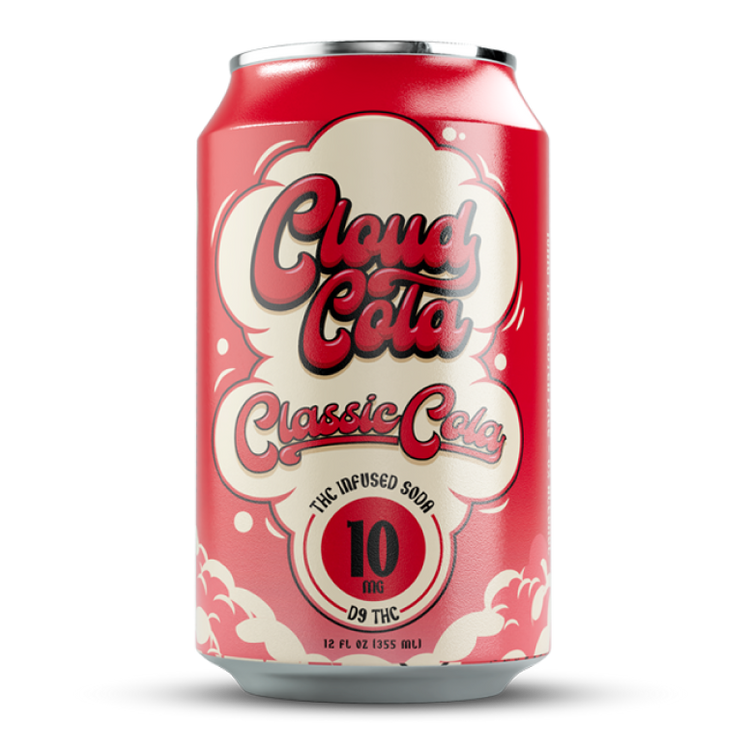Types of Drug Tests
Drug testing methods vary widely, each designed to detect specific substances or classes of drugs in biological samples like urine, blood, hair, and saliva. Understanding these different types of tests is crucial for comprehending how THC might be detected in various scenarios.
Urine Tests
Urine tests are the most common type of drug test. They involve collecting a urine sample which is then analyzed in a laboratory for the presence of drugs or their metabolites. THC, the psychoactive compound in marijuana, and its metabolites can stay in urine for days to weeks depending on factors like frequency of use, metabolism, and hydration levels.
Saliva Tests
Saliva tests are another method used to detect drug use. They involve collecting a saliva sample which is analyzed for the presence of drugs or their metabolites. Saliva tests typically have a shorter detection window than urine tests, as THC and its metabolites are present in saliva at lower concentrations and for a shorter duration. They are often preferred for detecting recent drug use as they can detect THC within hours after consumption.
Hair Follicle Tests
Hair follicle tests are a type of drug test that analyze hair strands to detect the presence of drugs or their metabolites. These tests have a longer detection window than urine or saliva tests, as drugs and their metabolites can be stored in hair for several months. This makes hair follicle tests useful for detecting long-term drug use.
- Urine Tests: The most common type, analyzing urine for THC and its metabolites. Detection window can range from days to weeks.
- Saliva Tests: Analyze saliva for the presence of drugs; shorter detection window than urine tests (hours to days).
- Hair Follicle Tests: Analyze hair strands, detecting drug use over a longer period (months).
Blood Tests
Blood tests are less common for routine drug testing compared to urine or saliva tests. They involve drawing a blood sample which is then analyzed in a laboratory for the presence of drugs. Blood tests have a very short detection window for THC, typically only a few hours after consumption, as it quickly metabolizes in the body.
While not commonly used for marijuana drug testing due to the short detection window, blood tests can be employed in certain situations where recent use needs to be confirmed rapidly, such as in cases of suspected impairment or workplace accidents.
THC Metabolism and Detection Time
Tetrahydrocannabinol (THC) is the psychoactive compound found in marijuana. When consumed, THC is metabolized by the body and converted into various metabolites that can be detected through drug tests. The time these metabolites remain detectable varies depending on factors like frequency of use, individual metabolism, and the type of drug test used. Understanding how THC is metabolized and the detection windows of different testing methods is crucial for navigating situations where drug testing may occur.
How Long THC Stays in Your System
The way our bodies process THC (tetrahydrocannabinol) plays a key role in how long it stays detectable. Once ingested, THC is broken down by enzymes into metabolites, which are then eliminated through urine, saliva, blood, and even hair follicles. The length of time these metabolites persist varies greatly depending on individual factors like body mass, metabolism rate, and frequency of use.
For instance, someone who uses cannabis regularly might have THC metabolites detectable in their system for weeks, while a casual user could have them detected for only a few days. Hydration levels also play a role, as drinking plenty of fluids can help flush out THC metabolites faster.
Factors Affecting Detection Time
THC metabolism is a complex process where the body breaks down the psychoactive compound into various metabolites. These metabolites are then excreted through urine, saliva, blood, and hair follicles. The duration for which these metabolites remain detectable varies based on several factors.
Frequency of THC use is a primary factor influencing detection time. Regular users tend to have THC metabolites present in their system for longer periods compared to occasional users. Individual metabolism also plays a role; people with faster metabolisms may clear THC and its metabolites more quickly. Body mass can influence detection time as well, with larger individuals potentially taking longer to eliminate THC.
Hydration levels are another crucial factor. Drinking plenty of fluids can help flush out THC metabolites, shortening the detection window. Conversely, dehydration can prolong the presence of THC metabolites in the body.
Detection Time for Different THC Drinks
The length of time THC remains detectable in various bodily fluids depends on several factors.
Edibles
Detection times for THC vary depending on the type of drug test and individual factors. Urine tests, the most common type, can detect THC for days to weeks, while saliva tests have a shorter detection window, typically hours to days.
Hair follicle tests are unique as they can detect THC use for months due to the long-term storage of drugs in hair.
Blood tests have the shortest detection window, typically only a few hours after consumption, because THC metabolizes quickly in the body.

Beverages with Concentrated Extracts
The detection time for THC in various drinks and beverages containing concentrated extracts depends on several factors, primarily the type of drug test used, individual metabolism, frequency of use, and hydration levels.
- Urine Tests: Can detect THC for days to weeks after consumption, making them a common method for detecting recent or chronic marijuana use.
- Saliva Tests: Detect THC for a shorter duration, typically hours to days, due to lower concentrations of THC and metabolites in saliva. They are often used to screen for recent drug use.
- Hair Follicle Tests: Can detect THC for months, making them suitable for identifying long-term marijuana use patterns.
Low-Dose THC Beverages
The detection time for THC in drinks varies depending on the type of test used and individual factors.
- Urine Tests: These tests can detect THC metabolites for several days to weeks after consumption, depending on frequency of use and other individual factors.
- Saliva Tests: Detection times are shorter with saliva tests, typically ranging from a few hours to a couple of days.
- Hair Follicle Tests: These tests can detect THC metabolites for several months, providing information about long-term marijuana use.
It’s important to remember that these are general ranges and individual results can vary.
Frequency of Drug Testing
Understanding the frequency of drug testing is essential in navigating situations where such tests might occur. Drug testing methods vary widely, each designed to detect specific substances or classes of drugs in various biological samples.
Workplace Testing
The frequency of workplace drug testing varies depending on several factors, including industry, company policy, and legal regulations. Some industries, such as transportation and healthcare, have stricter drug testing policies due to safety concerns.
Random drug testing is a common practice in some workplaces, where employees are selected at random for testing. This helps deter drug use and maintain a safe work environment.
Other workplaces may implement drug testing procedures only when reasonable suspicion exists, such as if an employee exhibits signs of impairment or is involved in an accident.
Pre-employment drug testing is also standard practice for many companies to ensure new hires are not under the influence of drugs.

Regular drug testing programs can help reduce workplace accidents and injuries, improve productivity, and create a safer work environment.
Pre-employment Screening
Drug testing methods vary widely, each designed to detect specific substances or classes of drugs in biological samples like urine, blood, hair, and saliva. Urine tests are the most common type of drug test. They involve collecting a urine sample which is then analyzed in a laboratory for the presence of drugs or their metabolites. THC, the psychoactive compound in marijuana, and its metabolites can stay in urine for days to weeks depending on factors like frequency of use, metabolism, and hydration levels. Saliva tests are another method used to detect drug use. They involve collecting a saliva sample which is analyzed for the presence of drugs or their metabolites. Saliva tests typically have a shorter detection window than urine tests, as THC and its metabolites are present in saliva at lower concentrations and for a shorter duration. They are often preferred for detecting recent drug use as they can detect THC within hours after consumption. Hair follicle tests are a type of drug test that analyze hair strands to detect the presence of drugs or their metabolites. These tests have a longer detection window than urine or saliva tests, as drugs and their metabolites can be stored in hair for several months. This makes hair follicle tests useful for detecting long-term drug use. Blood tests are less common for routine drug testing compared to urine or saliva tests. They involve drawing a blood sample which is then analyzed in a laboratory for the presence of drugs. Blood tests have a very short detection window for THC, typically only a few hours after consumption, as it quickly metabolizes in the body.
The frequency of workplace drug testing varies depending on several factors, including industry, company policy, and legal regulations. Some industries, such as transportation and healthcare, have stricter drug testing policies due to safety concerns. Random drug testing is a common practice in some workplaces, where employees are selected at random for testing. This helps deter drug use and maintain a safe work environment. Other workplaces may implement drug testing procedures only when reasonable suspicion exists, such as if an employee exhibits signs of impairment or is involved in an accident. Pre-employment drug testing is also standard practice for many companies to ensure new hires are not under the influence of drugs.
Random Testing
Frequency of drug testing can vary greatly depending on industry, company policy, and legal regulations. Some workplaces, like those in transportation or healthcare, might have more frequent testing due to safety concerns.
Random drug testing is a common method used by some companies to deter drug use and maintain a safe work environment. This involves selecting employees randomly for testing.
Other companies may only conduct drug tests when there’s reasonable suspicion, such as if an employee shows signs of impairment or is involved in an accident.
Pre-employment drug testing is also standard practice for many companies to ensure new hires aren’t under the influence of drugs before starting work.
Tips for Avoiding Positive Results
Understanding how long THC stays detectable and the various methods used for testing is crucial.
- Be mindful of your consumption frequency: The more frequently you use THC, the longer it may remain detectable in your system.
- Hydrate properly: Drinking plenty of water can help flush out THC metabolites faster, potentially shortening the detection window.
- Time your drug tests: If you know a drug test is coming up, avoid THC consumption for as long as possible to minimize the risk of a positive result.
Cloud Cola cannabis soda – shop now
See what this article explains
Browse the whole blog
- Nu-Derm Skin System Near Milford, Surrey - October 19, 2025
- Nu-Derm Skin System Near Blackheath, Surrey - October 17, 2025
- Non-Surgical Brazilian Bum Lift In Tongham Surrey - October 14, 2025
